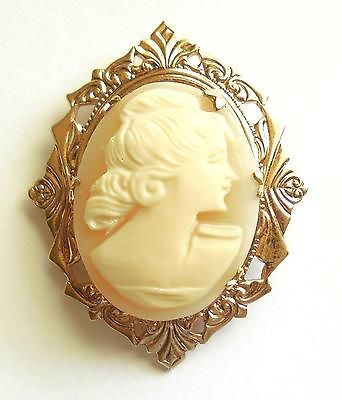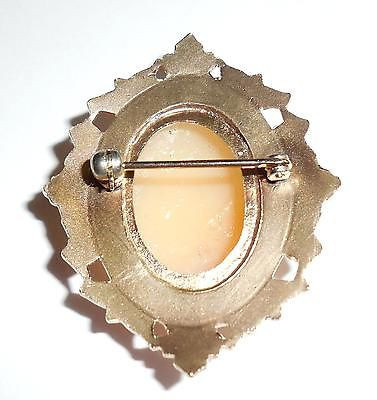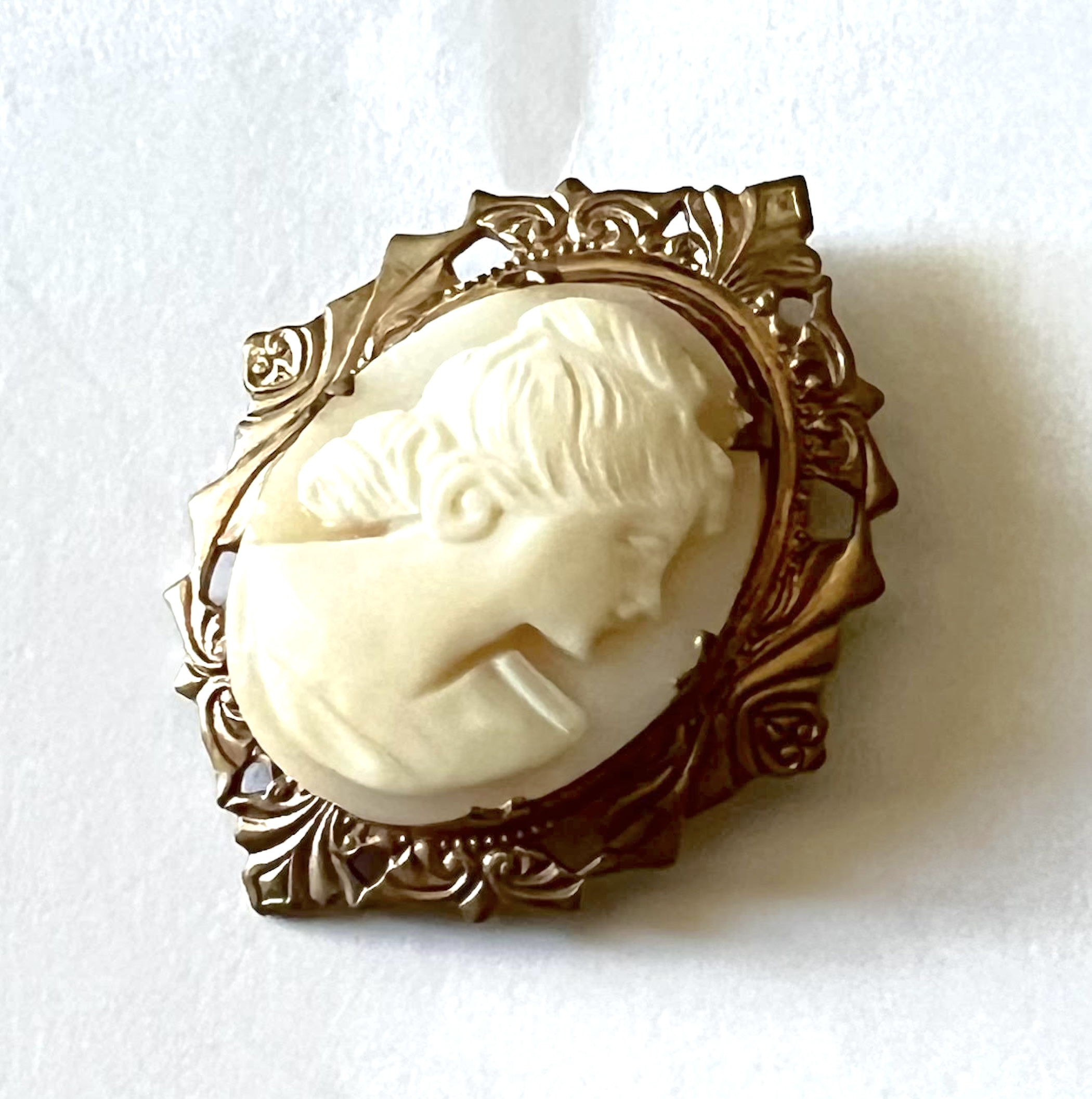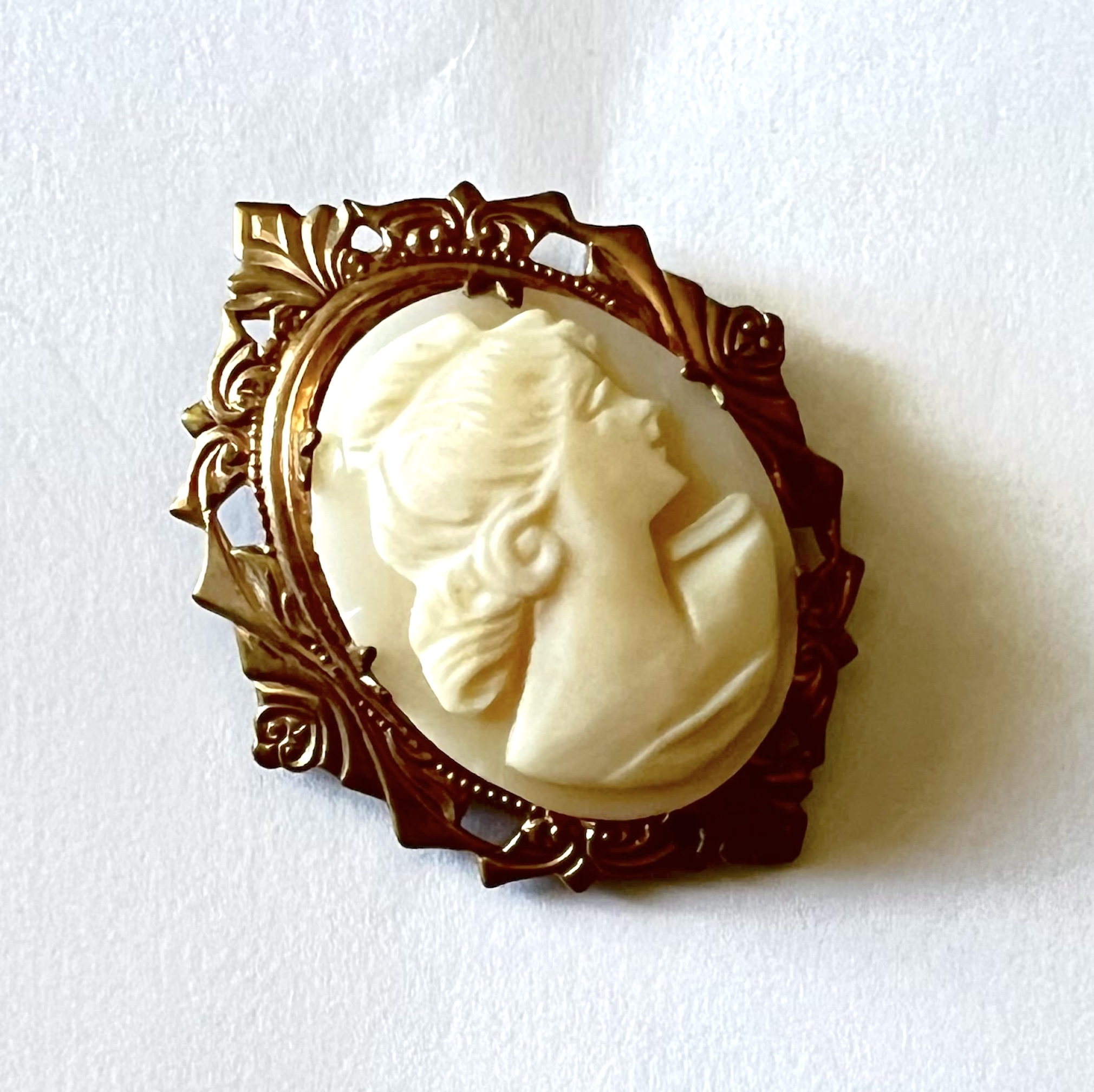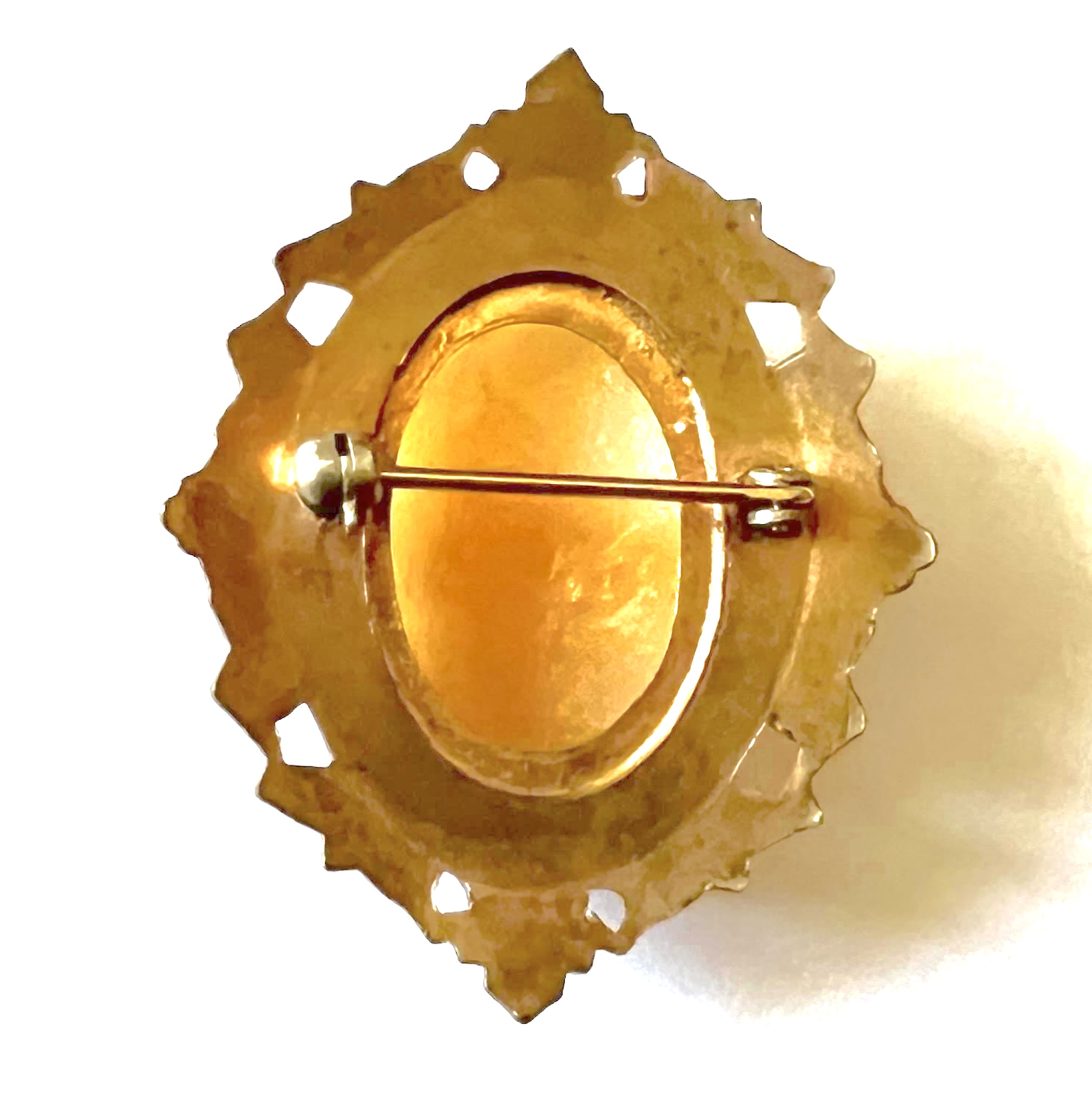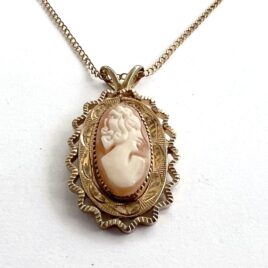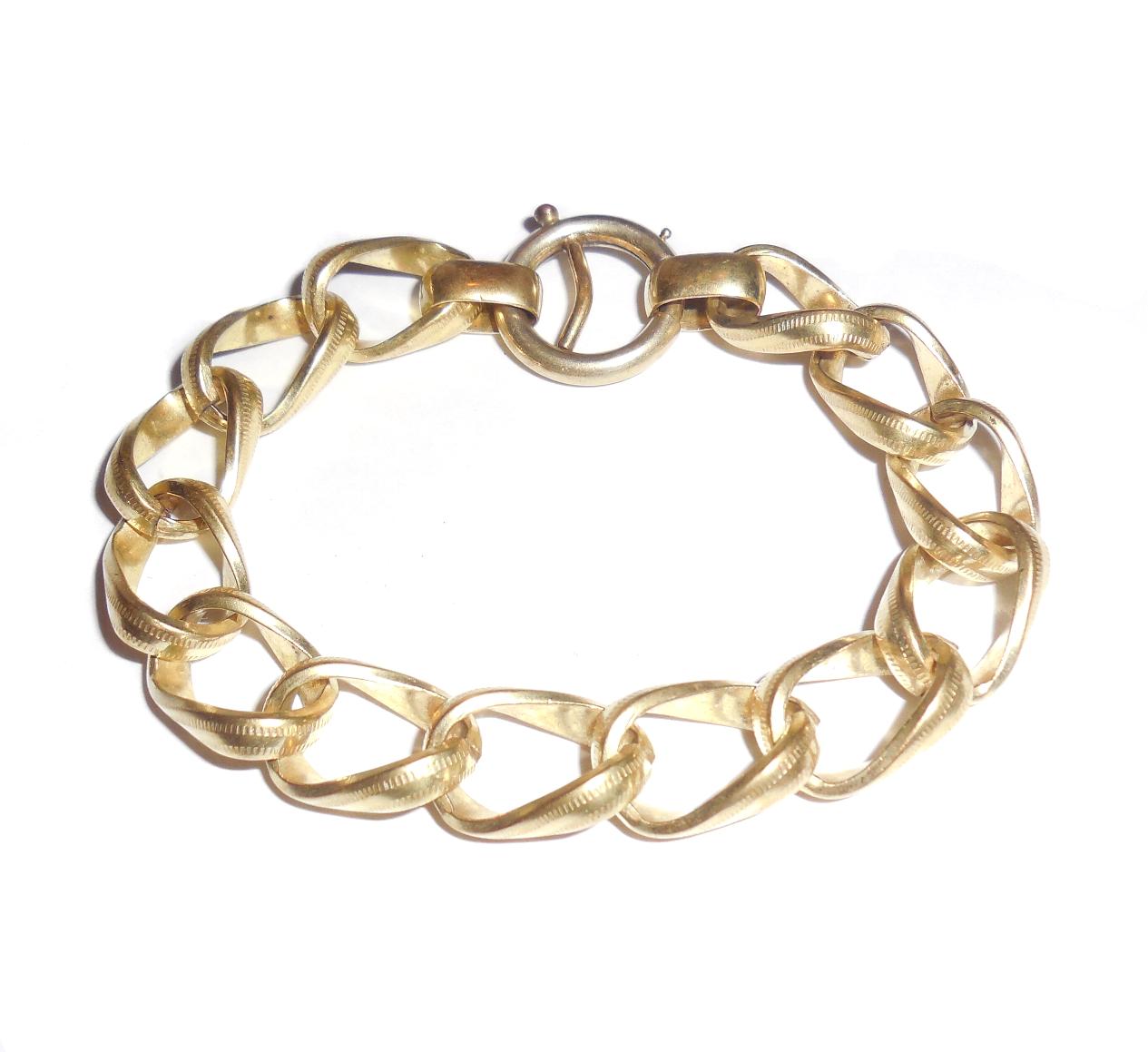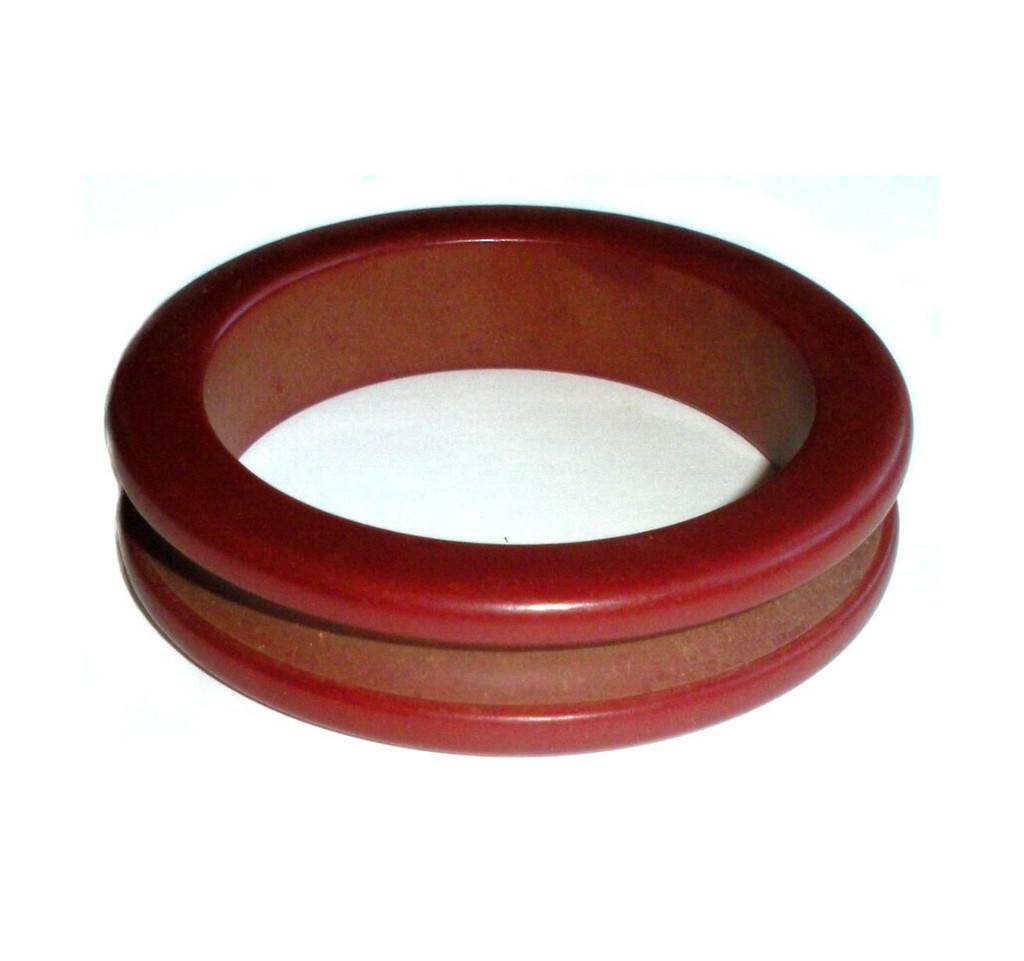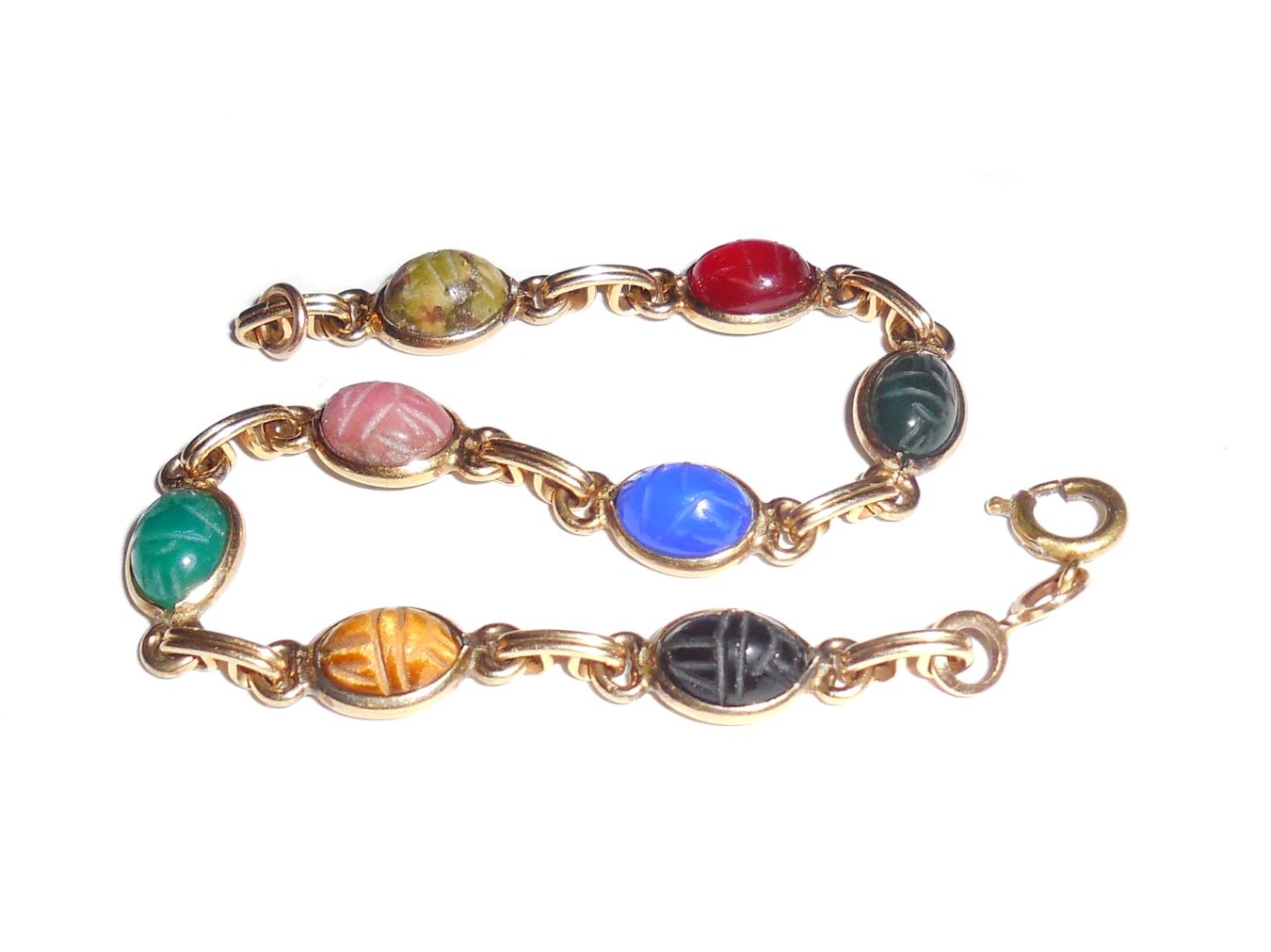Description
Lovely Antique Edwardian Gold Gilt Carved Shell Cameo Estate Pin Upcycled Estate Jewelry Brooch. Original Late Edwardian to Early Art Deco gold gilt frame is in very good condition. Minor age wear to the back of the gold frame and a clear laminate residue to back of cameo. No breaks or hairlines or damage. Original gold back bezel is in place.
The cameo is an original, clean, clear, natural shell portrait with a crisp, neat and detailed carved portrait face which is very pretty. The 2 pieces were upcycled along the way and formed a marriage. It is upcycled as the frame is late Edwardian to early Art Deco and the cameo is Art Deco. The cameo is a little large for the bezel. However, it is tightly set into place with 4 double claw prongs as well as glued onto the bezel. As such, there is no movement and the cameo is tight.
The cameo portrait is beautiful and in excellent condition. It has no cracks or chips. No damage or repair. There are no repairs or alterations of any kind to the cameo. In addition, the frame is in much the same condition having no repair or alterations of any kind. Size of brooch is 1 5/8 inches or 1.63 inches tall. Width across is 1 1/4″ inches or 1.25 inches. The locking clasp on the back is original to the frame and in excellent condition.
Given the beautiful deep carved antique gold gilt frame as well as the soft pretty detailed look of the cameo this is a lovely Antique Edwardian Gold Gilt Carved Shell Cameo Estate Pin Upcycled for your vintage and antique jewelry collection.
About Cameos:
In fine jewelry, the cameo is defined as an ornament carved in relief from a high-quality material such as stone, shell, coral, Gutta-percha, bog oak, ivory, lava, or mother-of-pearl. In costume jewelry, cameos are generally made from molded plastic or glass.
The most common cameo motif is the portrait. In the past, these bore the likeness of an actual person, usually a celebrity of the day—a ruler, scholar, or philosopher. Early in the 19th century, cameos started to feature an anonymous Roman woman wearing no jewelry. Victorian women on the Grand Tour—a traveling rite of passage for upper-class Europeans—sought out lava cameos carved with the mystery woman’s image when they were in Italy. These affluent Victorians eventually had a big influence on cameos when they demanded a more familiar-looking lady, with a thinner neck, her hair up, and wearing jewelry.
Vintage Cameos:
Vintage cameos also incorporated religious figures and scenes, floral motifs, and images from mythology. In particular, ancient Roman motifs have been popular for cameos since they first appeared. This was during the reign of Alexander the Great, when they were made of agate, onyx, and sardonyx.
In the salons of 18th-century Europe, carved gemstones were all the rage with high-society ladies. Cameo makers of the time would take Plaster of Paris molds of these carved gemstones. They were used as records of notable cameo collections. At the time, cameos were a sign of wealth and privilege. However, glass paste brought cameos to the mainstream. Scottish artisan James Tassie began making molds of esteemed cameo collections. This was in order to recreate the images as glass-plate cameos that could pass as carved jewels.
Soon, carvers discovered that shell was a soft, durable, and easy-to-carve material. It also made for less-formal looking jewelry. Empress Josephine wore a shell cameo every day, making them a must-have in France. Soon they caught on in England, where shell cameos were favored by Queen Victoria for her own adornment and as gifts.
As the popularity of cameos took off in the 1800s, they became incorporated into daily life.
http://www.collectorsweekly.com/fine-jewelry/cameos
